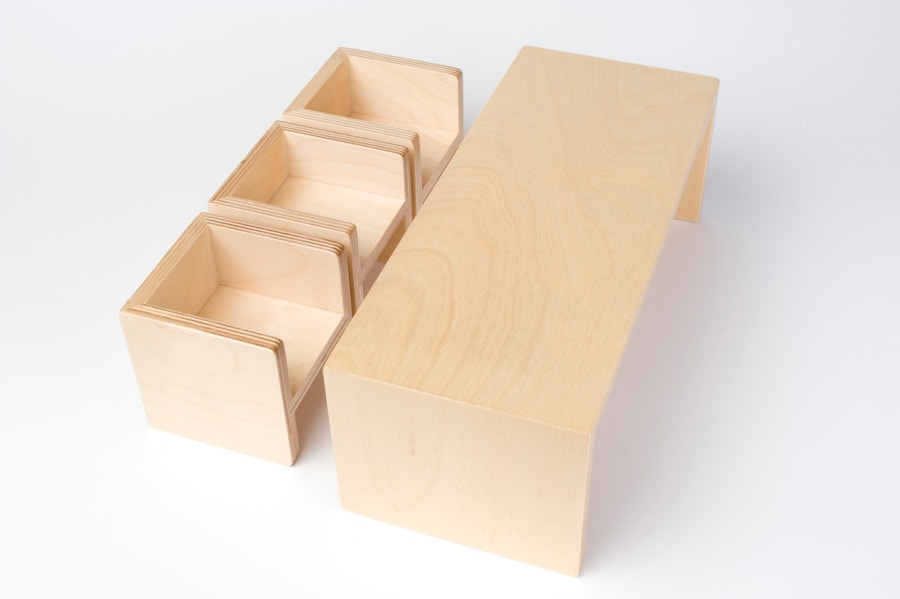Before embarking on the journey of organizing your drawers, it is crucial to take a step back and assess your specific needs. This initial evaluation serves as the foundation for a successful organization strategy. Begin by identifying what items you currently store in your drawers and how frequently you use them.
For instance, if you have a kitchen drawer filled with utensils, consider which ones you use daily versus those that are rarely touched. This analysis will help you determine which items are essential and which can be relocated or discarded. Additionally, think about the purpose of each drawer.
Are they meant for storage, easy access, or a combination of both? For example, a desk drawer may need to accommodate office supplies like pens, paper clips, and sticky notes, while a bedroom drawer might be reserved for clothing or accessories. By clearly defining the purpose of each drawer, you can tailor your organization efforts to meet those specific needs, ensuring that everything has its rightful place and is easily accessible when required.
Key Takeaways
- Assess your needs before organizing to understand what you require from the space.
- Declutter and sort items to get rid of unnecessary items and make the organization process easier.
- Choose the right organizational tools such as bins, dividers, and trays to maximize space and keep items organized.
- Create a system for easy access by arranging items based on frequency of use and functionality.
- Maximize space by utilizing vertical storage, drawer organizers, and utilizing the back of doors.
- Label and categorize items to make it easy to find and put away items.
- Maintain your organized drawers by regularly decluttering and reorganizing as needed.
- Reevaluate and adjust your organization system as needed to ensure it continues to meet your needs.
Decluttering and Sorting
Once you have assessed your needs, the next step is to declutter and sort through the contents of your drawers. This process can be both liberating and daunting, as it often involves confronting items that have accumulated over time. Start by emptying each drawer completely, laying out all items on a flat surface.
This visual representation allows you to see everything at once, making it easier to decide what to keep, donate, or discard. As you sort through the items, consider implementing the “one-year rule.” If you haven’t used an item in the past year, it may be time to let it go. This rule can be particularly effective for clothing or kitchen gadgets that often linger in drawers long after their usefulness has expired.
Additionally, create categories for the items you wish to keep. For example, separate office supplies from personal items or kitchen tools from miscellaneous gadgets. This categorization will streamline the organization process and make it easier to find what you need later.
Choosing the Right Organizational Tools

With a clearer understanding of your needs and a sorted collection of items, the next step is to choose the right organizational tools that will facilitate an efficient system. The market offers a plethora of options ranging from drawer dividers and bins to trays and organizers specifically designed for various types of items. When selecting these tools, consider the dimensions of your drawers and the types of items you plan to store.
For instance, if you are organizing a kitchen drawer filled with utensils, a tiered organizer can maximize vertical space while keeping everything visible and accessible. Alternatively, if you are dealing with a cluttered office drawer, small bins can help separate paper clips from sticky notes and pens. It’s also important to think about aesthetics; choosing organizers that complement your home’s decor can enhance the overall look of your space while serving a functional purpose.
Creating a System for Easy Access
Creating an effective system for easy access is essential in maintaining an organized drawer. The goal is to ensure that every item is not only stored efficiently but also easily retrievable when needed. One effective method is to arrange items based on frequency of use.
Place the most frequently used items at the front or top of the drawer for quick access, while less frequently used items can be stored further back or on lower shelves. Another strategy is to group similar items together. For example, in a bathroom drawer, keep all toiletries in one section and grooming tools in another.
This not only makes it easier to find what you need but also helps maintain order over time. Consider using clear containers or bins so that you can see the contents at a glance without having to rummage through everything. This visibility reduces frustration and encourages consistent organization.
Maximizing Space
Maximizing space within your drawers is a critical aspect of effective organization. Many people underestimate the potential of their drawer space; however, with some strategic planning, you can significantly increase storage capacity. One approach is to utilize vertical space by incorporating tiered organizers or stacking bins that allow you to store more items without sacrificing accessibility.
Additionally, consider using drawer liners or mats that not only protect the surfaces but also provide grip for items, preventing them from sliding around when opening or closing the drawer. If you have deep drawers, consider using shallow bins to create layers; this way, you can store smaller items on top while utilizing the deeper space below for larger items. By thinking creatively about how to use every inch of available space, you can transform even the most cluttered drawers into organized havens.
Labeling and Categorizing

Labeling and categorizing are vital components of an effective organization system. Once you have sorted and stored your items, clear labels will help everyone in your household know where things belong and make it easier to find what they need quickly. Use a label maker or write labels by hand on adhesive tags; either method works as long as they are clear and legible.
When categorizing items, think about how they are used together. For example, in a craft drawer, you might group together scissors, glue sticks, and markers under one label while keeping paper and other materials in separate sections. This not only enhances functionality but also encourages everyone to return items to their designated spots after use.
Over time, this practice fosters a culture of organization within your home.
Maintaining Your Organized Drawers
Maintaining organized drawers requires ongoing effort but is essential for long-term success. After investing time into organizing your drawers, it’s important to establish routines that prevent clutter from creeping back in. One effective strategy is to schedule regular check-ins—perhaps once every few months—to reassess the contents of each drawer and make adjustments as necessary.
During these check-ins, take note of any items that have become cluttered or disorganized again. If certain items are consistently out of place, consider whether they need a new home or if their usage frequency has changed. Additionally, encourage family members or housemates to participate in maintaining order by reminding them of the importance of returning items to their designated spots after use.
Reevaluating and Adjusting as Needed
The final step in maintaining an organized system is to regularly reevaluate and adjust as needed. Life changes—new hobbies may emerge, children grow up, or seasonal items may need to be stored away—so it’s important that your organization system remains flexible enough to adapt to these changes. Set aside time at least twice a year to review your drawers comprehensively.
During these evaluations, ask yourself if the current organization still meets your needs or if there are better ways to arrange items based on how they are used now. For example, if you’ve taken up baking as a new hobby, you might find that your kitchen drawer needs additional space for baking tools like measuring cups and spatulas. By being proactive about reevaluating your organization system, you ensure that it continues to serve its purpose effectively over time.
In conclusion, organizing drawers is not merely about tidiness; it’s about creating an efficient system that enhances daily life by making everything easily accessible and functional. By assessing your needs thoroughly, decluttering effectively, choosing appropriate organizational tools, creating systems for easy access, maximizing space creatively, labeling clearly, maintaining order diligently, and reevaluating regularly, you can transform any chaotic drawer into an organized oasis that simplifies your life.
Office drawers are an essential component of any workspace, providing storage and organization for important documents and supplies. In a well-designed office interior, drawers can also contribute to the overall aesthetic and functionality of the space. For more tips on optimizing your office layout, check out this article on the benefits of office interior design in Dubai. Creating a cohesive and efficient workspace can improve productivity and employee satisfaction, making it worth investing in quality office furniture like drawers.
FAQs
What are office drawers?
Office drawers are storage units typically found in desks or filing cabinets that are used to store office supplies, documents, and other items.
What are the different types of office drawers?
There are various types of office drawers, including pencil drawers, file drawers, and utility drawers. Pencil drawers are shallow drawers designed to hold small office supplies, while file drawers are deeper and are used to store files and documents. Utility drawers are versatile drawers that can be used for a variety of office supplies.
What materials are office drawers made of?
Office drawers can be made of various materials, including wood, metal, plastic, and composite materials. The choice of material often depends on the style and durability desired for the office furniture.
How are office drawers organized?
Office drawers can be organized using dividers, trays, and organizers to separate and categorize different items. This helps to keep the contents of the drawers neat and easily accessible.
What are the benefits of using office drawers?
Office drawers help to keep the workspace organized and clutter-free by providing a designated space for office supplies and documents. They also help to maximize storage space and improve efficiency by making it easier to find and access items when needed.


